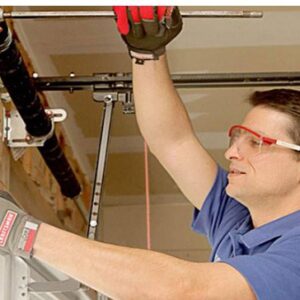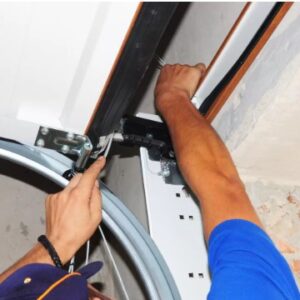When temperatures drop, air compressors can start showing signs of struggle. In Canada’s long winters, the cold doesn’t just slow machines, it can cause real performance and reliability problems. We deal with these challenges every year, and through experience, we’ve learned what actually helps. Here, we’ll cover the most common cold weather issues, explain why they happen, and share practical steps to prevent or fix them before they affect your work.
How Cold Weather Affects Air Compressor Performance
Cold weather changes how air behaves. It becomes denser, which means the compressor must work harder to draw in and compress the same amount of air. This extra strain often leads to slower startup times, oil thickening, moisture freezing, and in extreme cases, equipment damage.
Beyond performance, the biggest concern is temperature-related stress on internal components. Rubber seals harden, metal parts contract, and condensation can form inside the tank or lines. When these issues combine, they can lead to shutdowns, leaks, or even cracked parts. Regular inspection and preventive maintenance make a huge difference, especially for those operating in regions with long cold seasons.
If you are looking for reliable equipment built for these conditions, you can explore air compressors in Canada for units designed to handle temperature extremes efficiently.
Starting Problems in Cold Weather
One of the first signs of trouble is difficulty starting the compressor. When oil thickens in the cold, it increases resistance inside the pump and motor. As a result, the motor may fail to start or trip breakers repeatedly.
The best solution is to use winter-grade synthetic compressor oil. It flows more easily in cold conditions and provides better lubrication during startup. Keeping the compressor in a heated space or installing a crankcase heater also helps maintain oil viscosity.
Another tip is to check the power supply. Cold weather can affect voltage levels, particularly in older electrical systems. Make sure connections are clean and tight, and the voltage matches your compressor’s requirements.
Frozen Moisture in the System
Condensation naturally forms inside tanks and lines when compressed air cools down. In freezing weather, that moisture can turn into ice. Ice buildup blocks air passages, clogs valves, and restricts flow, often causing the system to shut down unexpectedly.
Draining the air tank daily becomes even more important in winter. Using automatic drain valves can make the process more consistent, especially in unattended systems. Installing a desiccant or refrigerated air dryer also keeps moisture levels low before the air reaches the lines.
If the compressor operates outdoors or in an unheated area, wrap the lines with heating tape or insulation to prevent freezing. Small adjustments like these can prevent costly downtime.
Thickened Oil and Lubrication Issues
In cold temperatures, standard compressor oil becomes thick and sluggish. That reduces lubrication at startup, increasing friction and wear on bearings and pistons. Running a compressor with thick oil can quickly shorten its lifespan.
Switching to a synthetic all-season oil helps solve this problem. It maintains stable viscosity across a wide temperature range and resists oxidation, meaning it will not break down as easily under pressure.
In addition to changing oil, check the filter regularly. Cold air often carries more dust and debris because humidity drops, and that can clog filters faster than expected. Clean or replace them according to the schedule in your manual—or sooner if the compressor runs frequently in cold environments.
Pressure Drop and Air Leaks
When temperatures fall, seals and gaskets can contract slightly, allowing air to escape from fittings, couplers, or hose connections. The result is a noticeable pressure drop and longer cycle times.
To fix this, warm the compressor slowly before use to allow parts to expand evenly. Applying a small amount of silicone-based lubricant to O-rings helps keep them flexible. Also, perform a soap test on connections periodically: spray a mix of water and mild detergent on suspect areas and watch for bubbles that reveal escaping air.
Maintaining proper storage conditions can also prevent leaks. Keep the unit covered and shielded from direct exposure to freezing wind. Even a simple enclosure or tarp makes a difference when temperatures swing below zero.
Faulty Pressure Switches and Sensors
Electronic components like pressure switches, solenoids, and temperature sensors can fail in extreme cold if they are not rated for low temperatures. The moisture that condenses inside them can freeze, causing faulty readings or total failure.
If your compressor cycles erratically or does not shut off when it should, inspect the pressure switch and related wiring. Make sure all connectors are clean and dry. If necessary, move sensitive electrical components into a warmer area or use weatherproof housings.
Many facilities also use remote monitoring to detect irregular pressure or temperature readings before they lead to a shutdown. Investing in monitoring systems helps you anticipate issues early.
Air Intake Problems
Air intake plays a huge role in compressor performance. In winter, frost or snow can block intake vents, restricting airflow. When this happens, the compressor may overheat or operate inefficiently because it cannot draw enough air.
To prevent this, ensure that intake vents remain clear and covered with mesh or filters that block debris but allow free airflow. If your setup includes outdoor piping, add a short downward slope to the intake line so any condensed moisture drains away instead of freezing inside.
Regular cleaning of intake filters also improves reliability. In cold, dry air, dust tends to accumulate faster, and that can increase resistance in the system.
Storage and Location Considerations
The environment where you store or operate the compressor affects its ability to handle the cold. Compressors kept in unheated garages or outdoor sheds face greater stress than those in temperature-controlled spaces.
Whenever possible, position the compressor in a semi-heated or insulated area. Even a few degrees above freezing can make a difference. Insulating the tank and lines or using low-wattage heaters keeps the internal temperature stable without major energy costs.
In larger setups, consider a dedicated compressor room with thermostatic control. It prevents sudden temperature swings and protects both the compressor and its accessories.
The Role of Regular Maintenance
Preventive care matters most during winter. Cold amplifies every small weakness—whether that’s a minor leak, a worn belt, or old oil. Keeping up with maintenance schedules ensures the system remains dependable even in harsh weather.
We recommend a full inspection before each winter season. Check oil levels, drain systems, inspect belts and hoses, clean filters, and test all safety controls. Addressing these points early helps avoid breakdowns in the middle of winter when parts are harder to replace quickly.
Routine care also extends the lifespan of expensive components. Compressors that receive consistent maintenance typically operate more efficiently, use less energy, and deliver steadier pressure over time.
Practical Winter Tips for Better Operation
Small habits can prevent big problems. Before starting a cold compressor, allow a short warm-up period by running it unloaded for a few minutes. This circulates oil evenly and raises internal temperature gradually.
Keep spare filters, oil, and drain valves on hand since winter tends to accelerate wear. For outdoor units, use a weather-resistant cover that still allows airflow around the motor.
Finally, avoid running compressors continuously in freezing conditions. Short breaks between cycles let internal moisture escape and give the motor time to cool naturally.
If you need guidance on winterizing your system or setting up new units for cold environments, it helps to reach out and contact us for practical assistance from experienced professionals who understand local conditions.
FAQ
- Why does my air compressor take longer to start in cold weather?
Cold oil thickens and creates higher resistance in the motor. Using synthetic oil and keeping the compressor in a warmer space reduces this problem. - Can I use a space heater to warm my air compressor?
Yes, as long as it is done safely. Keep the heater at a distance to avoid overheating any components and ensure proper ventilation. - How often should I drain my compressor tank in winter?
Daily draining is ideal in cold months. It removes moisture that could freeze inside the tank and cause blockages or corrosion. - What temperature is too cold for an air compressor?
Most compressors operate best above 5°C. Below freezing, oil and moisture problems become more common, so extra protection or heating is recommended. - How can I tell if my air dryer is working properly in winter?
Check for moisture at the outlets. If air lines still show water or ice, the dryer may need service or the temperature may be too low for efficient operation.





